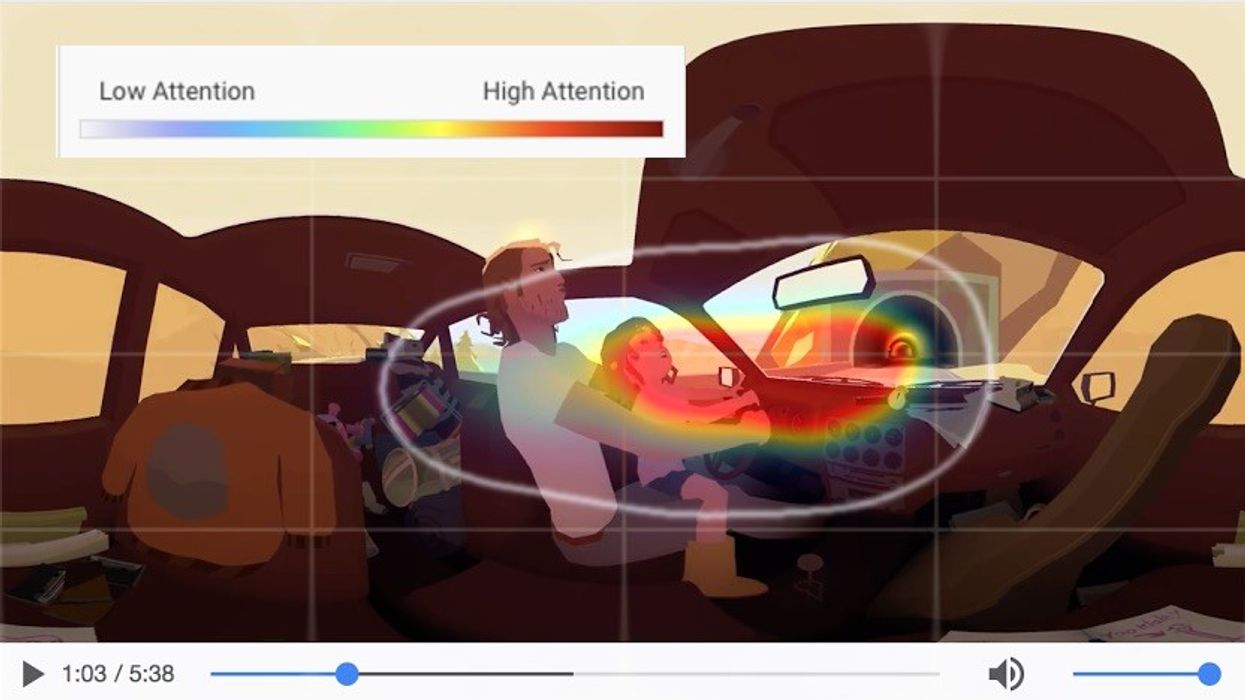VR Creator? Now You Can Tell Exactly Where Your Audience is Looking
YouTube is adding audience heatmaps to its 360° and VR content to help you understand precisely where in the frame your audience is looking and when.

Filmmakers have long tried to find the best way to identify what our audiences are paying attention to on the screen. With 100 years of practice, we're pretty good at focusing that attention, but modern technology still helps us identify where exactly audience eyeballs are. With VR, we are offered not only a much rounder canvas on which to paint our images, but also a new way of tracking where that attention is going.
Since a VR headset needs to track the orientation of your head in order to deliver VR content, it's also possible to track where the audience is looking. Google and YouTube are capitalizing on that fact by generating heat maps from their content to help VR creators understand what parts of their stories are attracting audience attention and when.
The still above is from the Academy Award-nominated VR short Pearl, shown in its full release below. By analyzing where viewers attention tends to go, filmmakers can learn a tremendous amount that will help us make more compelling stories as the language of VR cinema develops. For example, Google noted that 75% of audience attention is focused in front of them within a 90° area. That means that you have to work extra hard to use composition and audio design to cue your audience when to look around into the rest of the space, since they won't do it naturally. By previewing work on YouTube, you can analyze the success of techniques to direct attention and refine your editing and sound design to guide your audience on the journey you intend for them.
For more information, check out Google's full blog post.














